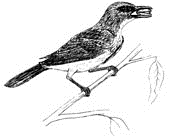Vertebrate Pest Conference: Proceedings

Vertebrate Pest Conference Proceedings: 17th (1996)
Date of this Version
1996
Document Type
Article
Citation
Published in Proceedings: Seventeenth Vertebrate Pest Conference … 1996, ed. Robert M. Timm & A. Charles Crabb (University of California, Davis, 1996).
Abstract
The U.S. Department of Agriculture, Animal and Plant Health Inspection Service (APHIS) has two federal (Section 3) vertebrate pesticide registrations with the U.S. Environmental Protection Agency (EPA) for gas cartridges to control damage to American agricultural resources and reduce threats to public health and safety. The gas cartridges are pyro-fumigant devices that produce primarily carbon monoxide when ignited. In sealed burrows or dens, carbon monoxide is highly toxic when inhaled, leading to tissue hypoxia. Carbon monoxide is recommended by the American Veterinary Medicine Association's panel for euthanatizing animals because it quickly induces unconsciousness without pain and with minimal discernible discomfort. APHIS'S gas cartridges for rodent and predator control have been developed and maintained primarily by research conducted at the Denver Wildlife Research Center (DWRC). APHIS's Gas Cartridge (EPA Reg. No. 56228-2) for burrowing rodent control has evolved through various formulations and sizes. Formerly, the Gas Cartridge was formulated with six-active ingredients; however, in April 1996, an amendment to use only two-active ingredients [sodium nitrate and charcoal (carbon)] and two-inert ingredients (fuller's earth and borax) was approved by EPA. These two-active ingredients produce carbon monoxide, and the inerts increase the burn time. DWRC field studies have shown the gas cartridge to be effective for the control of rats, woodchucks and Richardson's ground squirrels, but not for Northern pocket gophers. The Large Gas Cartridge (EPA Reg. No. 56228- 21) was originally developed using only two ingredients (sodium nitrate and charcoal) as a predacide to control coyotes in dens. Recent efficacy data led to the addition of the fox and skunk to the label; however, the Large Gas Cartridge was not effective in controlling badgers. This paper discusses the evolution of APHIS's gas cartridges and includes: 1) an introduction to APHIS's gas cartridges; 2) a synopsis of gas cartridge research conducted by personnel of the Denver Wildlife Research Center; and 3) a discussion of the management implications associated with the current status and future of APHIS's gas cartridges.
Included in
Animal Sciences Commons, Bioresource and Agricultural Engineering Commons, Environmental Engineering Commons


Comments
Copyright © 1996 (where applicable) by the Vertebrate Pest Council of the Vertebrate Pest Conference. Used by permission.